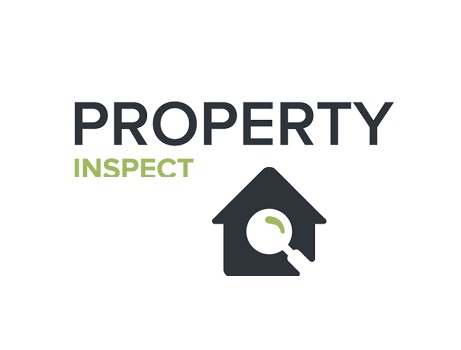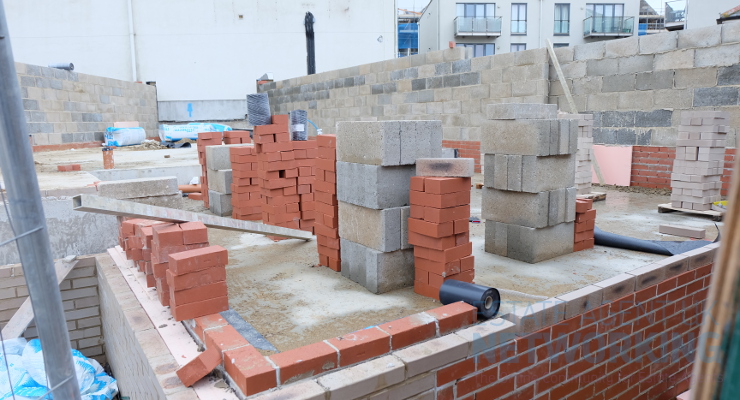Breaking Property News – 26/10/2023
Daily bite-sized proptech and property news in partnership with Proptech-X.

Property Inspect reviews three types of shared rental accommodation for landlord investors
The increasing cost of living and inflated mortgage interest rates are causing more people to consider the option of shared rental accommodation, which is giving landlords and property investors something to think about regarding the expansion of their property portfolios.
However, questions still remain over the better choice, with HMOs, multi-lets and multifamily properties each having distinctive pros and cons. In order to give some clarity, here are some easily understandable definitions of each, with further information about the responsibilities of landlords across the shared property types.
What is a multifamily property?
We have covered before what multifamily housing, but it’s worth reiterating here. Such properties are home to more than one household at the same time. Traditionally, multifamily housing is rented to younger people with more disposable income, but these properties have also become popular among the older generation of late. Separated into self-contained units with typical apartment configurations, they offer an element of co-living as common areas inside and out are shared, such as rooftop gardens, parking facilities and more.
Multifamily properties may be viewed as a fairly low-risk investment option, with the landlord able to rely on income from separate households in a much larger complex. Maintenance is also relatively simple, as these properties are commonly managed and maintained by a single company. Due to this, the risk of disputes could be lesser, and those that do arise are often easy to manage among the parties.
Typical responsibilities of multifamily property managers and owners include; Carrying out routine inspections, Ensuring compliance with building codes, Maintaining common areas and Conducting essential maintenance and repairs. Multifamily housing ranges in size and are subject to a variety of laws and regulations. As with other rental types, landlords must take care to avoid discrimination, fulfil accessibility standards, and carry out routine maintenance for tenant health and safety.
In the United States, landlords have to ensure compliance with the overarching Housing and Urban Development (HUD) regulations, which cover everything from rent control to tenant eligibility and maintenance.
What is a multi-let property?
The theme of sharing continues with multi-lets. These typically renovated family homes allow for the independent accommodation of up to five people. Such properties are commonly rented to students and young professionals who may be expected to share kitchens, communal spaces and other facilities. They are often seen as sound investment choices for landlords looking to expand their portfolios.
Although the financial benefits are obvious, there are a number of issues that must be considered when making multi-let investments. There’s likely to be a considerable initial spend, as the rooms have to be converted and refurbished to a high standard. For example, the landlord or property owner might be expected to provide furniture, maintain communal areas, and pay for services such as WiFi. Regulations will also have to be met and licenses acquired for such property repurposing.
Multi-let property owners must comply with the local authority’s fire and safety regulations. What’s more, if the property is more than two storeys high or being rented to more than five people from more than one household then the landlord will have to obtain a house in multiple occupation (HMO) license.
There will also be the responsibility of looking after multiple tenants and maintaining the property to everybody’s satisfaction. Therefore, a dedicated block manager or property management company may be hired for essential maintenance and clerical support.
What is an HMO?
The precise definition of an HMO, or houses in multiple occupation, will vary depending on your local authority. However, properties of this classification have multiple occupants who don’t comprise a single household, each considering the HMO as their main residence rather than a second home.
Although they can’t be used for commercial purposes, such a property may function as a shared house, hostel, converted apartment block, or collection of bedsits with some shared facilities. The home may be classed as an HMO if at least three tenants form more than one household and the toilet, bathroom or kitchen facilities are shared. It will be deemed a large HMO if at least five tenants live there, with the other criteria also being met.
HMOs are also protected by a number of regulations and laws. In the UK, for example, a council license must be obtained for the rental of an HMO to be shared by five or more people from two or more separate households. The number of people who can live in an HMO is determined by the number and size of bedrooms. There may be limits because of the size, number and location of facilities such as bathrooms, toilets and kitchens.
This may vary depending on licensing conditions imposed regionally. While HMOs typically generate far higher revenue than traditional buy-to-lets, landlords should be prepared to spend more time and money on the maintenance of these shared properties and correct configuration as per the licensing law in their area.
As well as assuming responsibility for the repair of faulty electrical wires and problems with the pipework or heating, HMO landlords must also ensure that: There are enough rubbish bins, The property is not overcrowded, Electrics are checked every five years, Yearly gas safety checks are carried out, Shared areas and facilities are clean and in good repair, Fire safety measures are in place, including working smoke alarms and there are enough facilities for cooking and washing
As with multi-lets, a significant investment of time and money may be required to convert the traditional family home into an HMO. Planning permission might be required if the HMO is to house five or more individual tenants, or if the use class is to be changed to a C3 (a single-family home or up to six people living together as a single household), or C4 ( housing between three and six unrelated people).
There are also a variety of HMO regulations covering everything from the fitting of carbon monoxide detectors to the provision of rubbish bins. The structure and exterior of the property must be kept in good condition, with regular maintenance and essential repairs being the landlord’s responsibility.
Protecting your property investment
Streamlined and efficient maintenance will be vital whether you are dependent on the rental income of a multifamily property, multi-let, or HMO. It makes sense to swap pen and paper for an end-to-end digital solution that will boost tenant satisfaction, leading to more reliable income and ongoing compliance with the various rules and regulations.
Designed to speed up manual, repetitive processes, the Property Inspect app allows vital property details to be captured and reported efficiently. Using the pre-configured templates, you can maintain compliance with key multi-family property regulations. It’s the smarter, more efficient and safest way of ensuring that each property generates as much revenue as possible.
Available for iOS and Android devices, our award-winning property inspection and operations software comes with these time saving and revenue-generating features, including:
- Off-line functionality, meaning that reports can be generated without a WiFi connection
- Date and time referenced photos / video capability to evidence damage or maintenance issues
- Live dashboard for up-to-date awareness of your entire property portfolio
- Customisable templates for the capture of essential property details
- Drag and drop diaries allow for the agreed assignment of repair and maintenance tasks
- Share reports easily with tenants, landlords and property managers
Hqo partners with ARC by supplying ‘Member of the Future’ campus experience APP
PRESS RELEASE Thursday 26 October 2023: HqO, a leading real estate experience platform provider, has been selected by ARC, one of Europe’s leading networks of science and innovation clusters, to power its new ‘Member of the Future’ campus experience app. The addition of ARC to HqO’s portfolio further expands its reach and user base across Europe and the UK.

Deployed across ARC’s four clusters in Oxford, Harwell, West London, and Uxbridge, the new app increases HqO’s reach by adding 1.6 million square feet of contracted space, and over 12,000 new users to its already sizeable global presence. Since inception, HqO has connected over 400 million square feet of space across more than 700 properties, in 32 countries.

Samuel Warren, Vice President of Sales EMEA, at HqO comments, “There has been a fundamental evolution in the real estate experience economy as space has moved from a commodity to a service and now to an experience. In response, real estate needs to be flexible to meet the ever-changing needs of the people using it, inspiring them, caring for them, and bringing them together. That’s why we created the Real Estate Experience (REX) category, and launched the HqO REX Platform, the first end-to-end experience solution built around the customer.
This asset agnostic, cross-property suite of powerful applications and services acts as the single source of truth for a property, assessing the health and performance of a customer’s experience within it, while providing the necessary tools for operators to manage and optimise it, all from one central location.”
“ARC already does so much to offer its members a unique, innovative, and engaging campus. We could not be more delighted to partner with them to enhance these opportunities and derive insights to further support the needs of their tenants and their experiences.”
Digital Connections at the Centre of Real Estate
The new app is helping to unlock the full potential of ARC’s campuses. Designed to connect seamlessly with ARC’s existing systems and support its member engagement methods, HqO’s platform offers a host of powerful features. These include custom branding, content management systems, app support, and a web portal allowing partners to access the HqO app directly from their desktops.
Accessing the platform via the desktop portal allows ARC to capture and analyse critical user and property data to inform the complete lifecycle of its real estate assets. This includes measuring and assessing the success of programmes, monitoring member and user satisfaction, and gathering insight on the performance of amenities, space, and services that can inform future investment and planning.
Dan Metcalfe, Senior Director of Community, Communications and Marketing at ARC commented: “Advanced Research Clusters (ARC) exists to help science and innovation businesses within our campus network to thrive. Supporting our community of 10,000 requires an outstanding digital ecosystem, and we’re delighted to partner with HqO. Together, we aim to deliver a state-of-the-art membership app which will make it easier for our members to connect, foster collaboration and enhance their campus experience.”
Partners and Members Already Feeling the Benefit
Following the release of ARC’s new campus experience app powered by HqO, its members are already seeing the benefit. With an active user rate of 80%, ARC members are accessing the app to discover and book themselves to events, smoothly manage gym and meeting room scheduling, and access exclusive offers.
Supporting the development of its members’ business skills and aiding in raising their profiles, ARC is also using the new app to promote and drive awareness of upcoming networking and workshop events. Increasing attendance at these events will further help foster the connections and partnerships that innovation businesses depend on.
Samuel Warren concluded: “It is a privilege to have ARC, one of the most exciting place-based innovation clusters, join our portfolio. Its track record of creating high-quality environments for business, R&D and hi-tech manufacturing occupiers is unmatched. As HqO expands across the UK and Europe, being selected by ARC is a huge validation of our service and technology.”
HqO is leading the transformation of the way people experience real estate by converging data, technology, and the customer. Through its Real Estate Experience (REX) Platform—a powerful and dynamic suite of applications and services—HqO has powered over 400 million square feet at over 700 properties across 32 countries. The world’s most innovative organisations rely on HqO to drive operational excellence by maximising and boosting tenant and employee acquisition, retention, and engagement.
Andrew Stanton Executive Editor – moving property and proptech forward. PropTech-X








